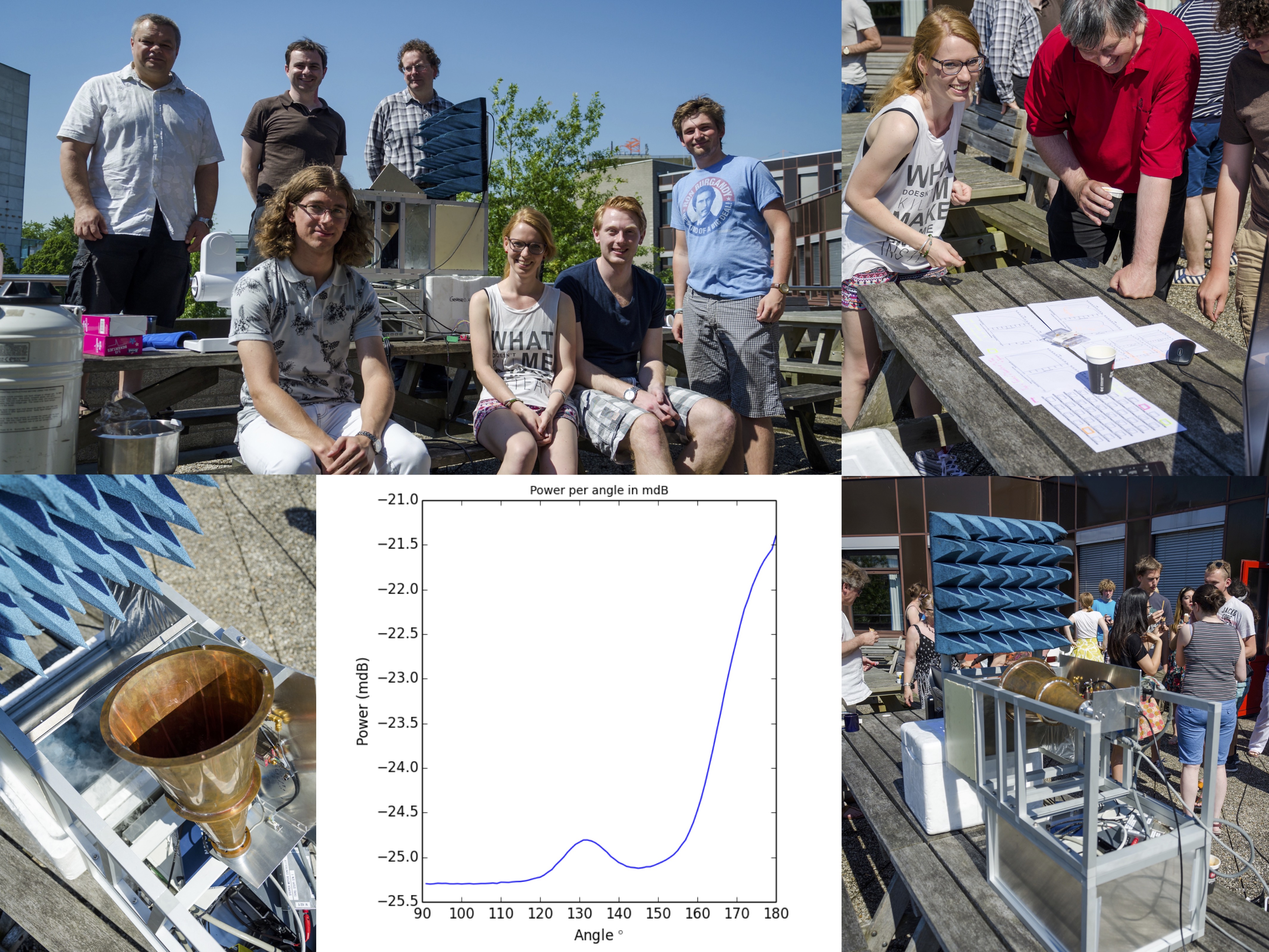![]() © RTV Drenthe, R.G.B. Halfwerk
© RTV Drenthe, R.G.B. Halfwerk
After weeks of programming, testing and integrating of numerous pieces of delicate LOFAR hardware like 192 Receiver Units (RCU), 24 RSP boards (Remote Station Processing board), 12 TBB’s (Transient Buffer Boards) , LCU’s ( Local Control Units), Network Equipment, Rubidium clock, Sync Optics boards, Line Control Panels, Power Supplies and tens of UTP, coax, infiniband and power cables, the ILT container as intended for the first of three new Polish LOFAR stations in row, station Baldy near Olsztyn has received first (led-)light when Menno Norden, System Engineer of ASTRON, entered the magic commands into the LCU!
The regional TV station RTV Drenthe recorded this magic moment on June 24th.
This container fully tested and ready to operate, now will be shipped to its destination to the Baldy station site in Poland where the actual roll-out is in full progress! The station Baldy is about 1.100 km from the central core of the International LOFAR Telescope (ILT)
The Polish LOFAR consortium POLFAR will get in total three new antenna stations in the north, west and south of Poland. These will be located in Lazy (in southern Poland, operated by the Jagiellonian University in Krakow), Baldy (in northern Poland, operated by the University of Warmia and Mazury in Olsztyn), and Borowiec (in western Poland, operated by the Space Research Centre of the Polish Academy of Sciences). The POLFAR consortium consists of 10 Universities and Knowledge Centers.
Probably you’ve noticed but a dedicated team so far has done a great job to bring again all required documentation up to date, let manufacture thousands pieces of hardware and bring all this gear together to create a new LOFAR station in row. Credits to, in random order: Albert van Duin, Albert Wieringh, Anne Koster, Edwin Stuut, Eim Mulder, Zabet Ahmadi, Han Wessels, Germon Offereins, Gijs Schoonderbeek, Henk Bokhorst, Henri Meulman, Jan Idserda, Jan Rinze Peterzon, Jan-Pieter de Reijer, Jűrgen Morawietz, Klaas Stuurwold, Marchel Gerbers, Marco Drost, Mark Ruiter, Martijn Brethouwer, Menno Norden, Michel Arts, Michiel Brentjens, Nico Ebbendorf, Patrica Breman, Peter Gruppen, Pieter Donker, Raymond v.d. Brink, Renate van Dalen, Ruud Overeem, Sieds Damstra, Sjouke Kuindersma and Teun Grit.
 © Kapteyn Institute/Astron
© Kapteyn Institute/Astron © Megan Argo, Ilse van Bemmel
© Megan Argo, Ilse van Bemmel © Kris Zarb Adami
© Kris Zarb Adami © Jaap van 't Klooster and ASTRON
© Jaap van 't Klooster and ASTRON © ASTRON & NASA
© ASTRON & NASA © RTV Drenthe, R.G.B. Halfwerk
© RTV Drenthe, R.G.B. Halfwerk © ASTRON
© ASTRON © ASTRON
© ASTRON © JvL
© JvL © DESP
© DESP © Bassa/Sipior
© Bassa/Sipior © Pieter Benthem
© Pieter Benthem © Astron / JIVE
© Astron / JIVE © Aleksandar Shulevski
© Aleksandar Shulevski © Rob Millenaar
© Rob Millenaar © Pictures taken by Niels Bos
© Pictures taken by Niels Bos © Emiel Brommer
© Emiel Brommer © Betsey Adams
© Betsey Adams © NRAO
© NRAO © Stellenbosch University / ASTRON
© Stellenbosch University / ASTRON